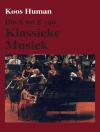Presents current analytic views by established scholars of the traditional tonal repertoire, with essays on works by Bach, Handel, Haydn, Mozart, Beethoven, Schubert, Chopin, and Brahms.
Outstanding Multi-Authored Collection Award from the Society for Music Theory
Bach to Brahms presents current analytic views on the traditional tonal repertoire, with essays on works by Bach, Handel, Haydn, Mozart, Beethoven, Schubert, Chopin, and Brahms. The fifteen essays, written by well-established scholars of this repertoire, are divided into three groups, two of which focus primarily on elements of musical design (formal, metric, and tonal organization) and voice leading at multiple levels of structure. The third groupof essays focuses on musical motives from different perspectives. The result is a volume of integrated studies on the music of the common-practice period, a body of music that remains at the core of modern concert and classroom repertoire.
Contributors: Eytan Agmon, David Beach, Charles Burkhart, L. Poundie Burstein, Yosef Goldenberg, Timothy L. Jackson, William Kinderman, Joel Lester, Boyd Pomeroy, John Rink, Frank Samarotto, Lauri Suurpää, Naphtali Wagner, Eric Wen, Channan Willner.
David Beach is professor emeritus and former dean of the Faculty of Music, University of Toronto. Yosef Goldenberg teaches at the Hebrew University of Jerusalem and at the Jerusalem Academy of Music and Dance, where he also serves as head librarian.
Содержание
Introduction
Strolling through a Haydn Divertimento with Two Heinrichs
Ritornelli or Soli: Which Did Mozart Write First in the Opening Movement of His Violin Concerto K. 207?
Outer Form, Inner Form, and Other Musical Narratives in Beethoven’s Opus 14, No. 2
Temporal Poise and Oblique Dynamic in the First Movement of Beethoven’s ‘Archduke’ Trio
Chopin as an Interpreter of Mozart: The Variations Opus 2 and
Don Giovanni
The First Movement of Brahms’s Fourth Symphony Revisited: A Study of the Fanfare and the ‘Cloud of Mystery’
‘Capricious Play’: Veiled Cyclic Relations in Brahms’s Ballades Op. 10 and Fantasies Op. 116
Chopin’s Study in Syncopation
A Sharp Practice, A Natural Alternative: The Transition into the Recapitulation in the First Movement of Beethoven’s ‘Hammerklavier’ Sonata
Ernst Oster’s Vision of Hidden Repetitions and Motivic Enlargements in J. S. Bach’s Short Keyboard Works
The ‘Pseudo-Einsatz’ in Two Handel Fugues: Heinrich Schenker’s Analytical Work with Reinhard Oppel
Formal Fusion and Its Effect on Voice-Leading Structure: The First Movement of Beethoven’s Opus 132 Revisited
Indistinct Formal Functions and Conflicting Temporal Processes in the Second Movement of Brahms’s Third Symphony
The Interaction of Structure and Design in the Opening Movements of Schubert’s Piano Trios in B-flat Major (D. 898) and E-flat Major (D. 929)
The Suspenseful Structure of Brahms’s C-Major Capriccio, Op. 76, No. 8: A Schenkerian Hearing
List of Contributors
Index












